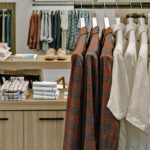Despite the recession, during which the majority of brands remained staunchly committed to their sustainability strategies and programs, global retail sales of organic cotton apparel, home, and personal care products increased 20 percent, according Textile Exchange.
Sales of organic cotton reached more than $5.61 billion from 2009-2010, an increase from $4.3 billion in 2009, according to TE's 2010 Global Market Report on Sustainable Textiles. That exceeded TE’s 2010 projection of $5.1 billion for 2010.
The rate was comparable to the 15 percent growth rate in organic fiber production, with the bulk of the market growth centered on companies in the United States and Europe.
According to the results of Textile Exchange surveys and interviews, the “Top Ten” organic cotton-using brands and retailers
globally in 2010 were (in order by rank):
- H&M (Sweden),
- C&A (Belgium),
- Nike, Inc. (Oregon, USA),
- Zara (Inditex) (Spain),
- Adidas (Germany),
- Greensource (Washington, USA),
- Anvil Knitwear (New York, USA),
- Target (Minnesota, USA),
- Disney Consumer Products, (California, USA), and
- Otto Group (Germany).
Certain companies had exceptional programs that resulted in a major reshuffling of the rankings from previous years. For example, H&M’s ambitious program launched past former front-runner C&A (which itself had an outstanding year) to take the lead and Adidas leapt past competitors to go from 11th to 5th place. Greensource and Target both increased two positions, Zara stepped up from 2008 and Disney Consumer Products ranked for the first time with robust sales of Anvil’s private label T’s to several in the Top Ten, the only reason for it to decrease. (Walmart did not submit data.)
Overviews of each of the companies’ organic cotton programs are included in the full report.
Several brands increased their volumes by 125 percent or more, knocking several loyal users of organic cotton out of the Top Ten, including Nordstrom and Williams-Sonoma.
If organic cotton market growth continues at the current rate of 20 percent per year, a conservative rate, retail sales of organic cotton products will likely grow to an estimated $6.2 billion in 2011 and $7.4 billion in 2012.
The economic recession, in large part, led to declining product sales across the board. This has led to a subsequent dip in organic fiber production, leaving little if no excess inventory. TE urgently recommends that brands and retailers contract with producer groups and textile mills to ensure the right type and amount of fiber is available. For the 2011/12 harvest, TE expects some improvement, but the lack of communication between the market, producer groups, and mills remains a significant barrier to sustainable growth.
More details are provided in Textile Exchange’s first Mid-Year Farm and Fiber Predictions Report, available free of charge on the TE Farm Hub at www.farmhub.textileexchange.org. Note that fiber production is projected to return to 2009/10 levels in the 2011/12 season and continue increasing.
the textile industry, the figures we received were nowhere near as robust as those for organic cotton but will still create a baseline for future research and projections.
Why Focus on “Sustainable” Textiles? Consider the Facts:
- Textile waste occupies nearly five percent of all landfill space.
- One million tons of textiles will end up in landfills every year.
- 20 percent of industrial fresh water pollution comes from textile treatment and dyeing.
- In 2009, the world used three trillion gallons of fresh water to produce 60 billion kilograms of fabric.
- It takes 700 gallons of fresh water to make one cotton T-shirt.
- One trillion kilowatt hours are used every year by the global textile industry, which equates to 10 percent of global carbon impact.
Two fibers, recycled polyester and TENCEL® (lyocell) were the two leading fibers in terms of quantity reported by responding companies.
Recycled Fibers
It should be no surprise that recycled polyester represented the lion’s share of recycled textiles in the apparel and textile industries. Sports apparel, uniforms, and home furnishings as well as lifestyle products were the leading users of the fiberamong respondents.














